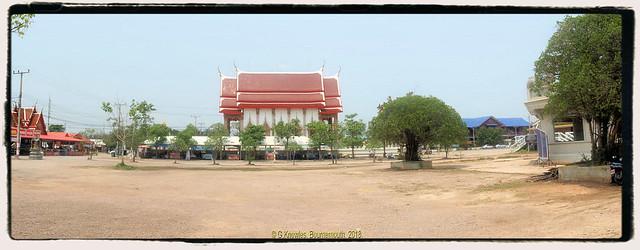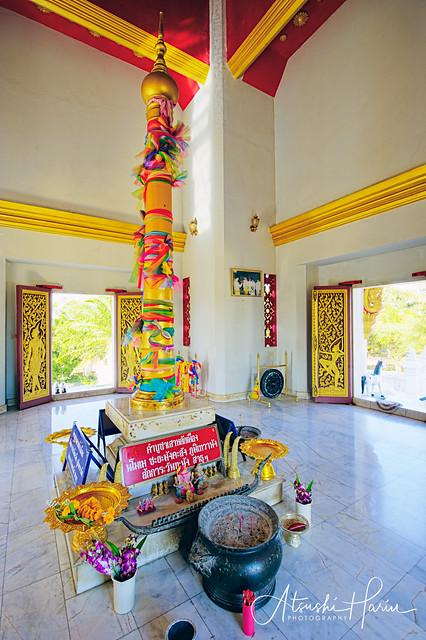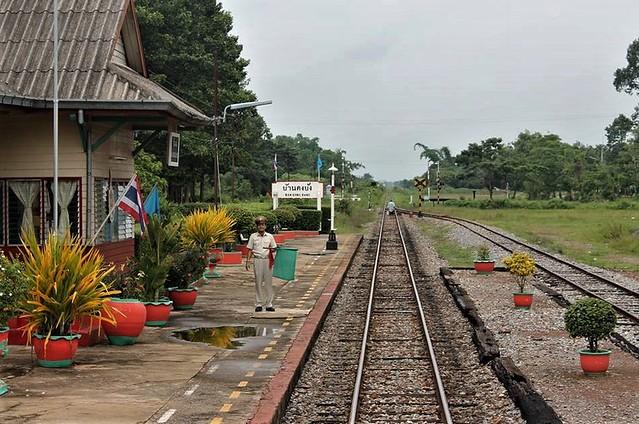
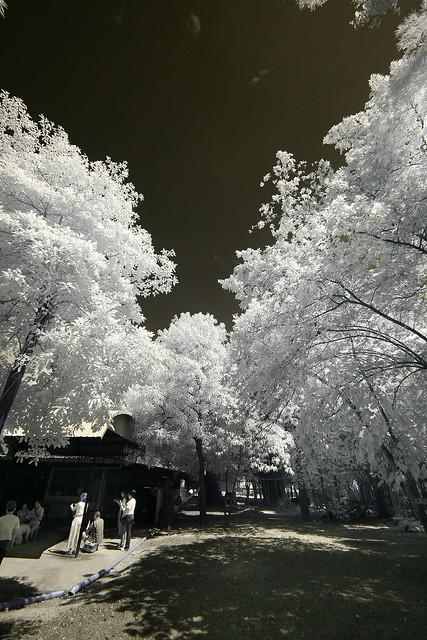
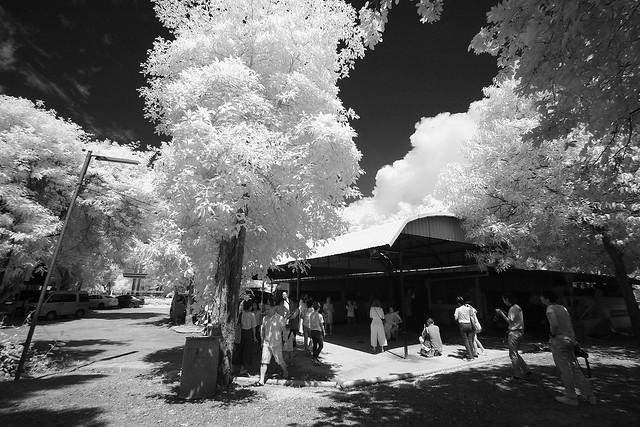
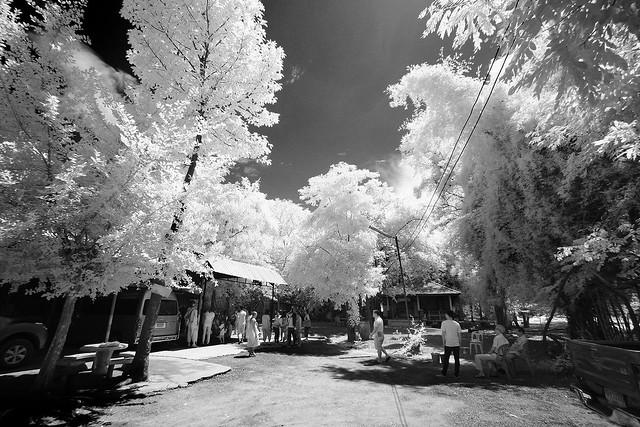
Amphoe Aranyaprathet
Overview
Amphoe Aranyaprathet: Gateway to Cambodia
Situated in the Sa Kaeo Province of Thailand, Amphoe Aranyaprathet is a vibrant town that serves as a crucial gateway to Cambodia. Known for its bustling border crossing at the Poipet border, this city welcomes a diverse mix of travelers, from tourists exploring Southeast Asia to locals crossing the border for work or leisure. The atmosphere is lively, marked by the constant movement of people and goods, making it an intriguing spot for those seeking to experience the hustle and bustle of Thai border culture.
The town itself is a blend of traditional Thai life and modern commerce. Street vendors line the roads, offering a variety of local delicacies such as grilled meats, spicy papaya salad (som tam), and sweet coconut desserts. The sounds of bargaining fill the air, as locals and travelers engage in the vibrant marketplace. The aroma of street food wafts through the streets, providing an authentic taste of Thai culinary culture that is irresistible to visitors.
Cultural Melting Pot
Aranyaprathet is a cultural melting pot, heavily influenced by its proximity to Cambodia. This is reflected in various aspects of daily life, from the architecture to the languages spoken. You will find temples that showcase both traditional Thai and Khmer designs, illustrating the historical connections shared between the two nations. The local population often includes Khmer-speaking communities, creating a unique blend of Thai and Cambodian culture that is palpable in the town’s atmosphere.
The town hosts several important festivals throughout the year, which provide a glimpse into local customs and traditions. Events such as the Songkran festival, celebrated in mid-April, see lively water fights and traditional rituals, while the Loy Krathong festival lights up the waterways with beautifully crafted floating lanterns. These celebrations are not only a way for locals to engage with their culture but also invite travelers to join in the festivities, creating memorable experiences.
Historical Significance
Historically, Amphoe Aranyaprathet has played a pivotal role as a trade route and transit point. Its significance was heightened during the Khmer Rouge era when many Cambodians fled to Thailand, and it became a crucial location for humanitarian efforts. Today, remnants of this history can still be seen in the War Veterans Monument, which commemorates those who served during this tumultuous period.
The nearby sites of interest, including the ancient Khmer temple complex known as **Prasat Khao Noi**, offer a glimpse into the rich history of the region. While exploring these ruins, visitors can appreciate the intricate stone carvings and architectural styles that date back to the Khmer Empire, providing a deeper understanding of the cultural and historical connections between Thailand and Cambodia.
Local Characteristics
The local characteristics of Amphoe Aranyaprathet are defined by both its bustling economy and its close-knit communities. Markets such as the **Aranyaprathet Market** are essential for daily life, offering everything from fresh produce to textiles. Here, visitors can engage with friendly vendors, learn about local products, and perhaps even try their hand at bargaining, which is a cherished skill in Thai culture.
For those seeking to explore beyond the markets, the natural beauty surrounding Aranyaprathet is noteworthy. The nearby **Khao Chakan** mountain range offers opportunities for hiking and enjoying panoramic views of the landscape. Additionally, the area is dotted with small lakes and parks, providing tranquil spots for relaxation amid the town's lively energy.
With its rich tapestry of culture, history, and local life, Amphoe Aranyaprathet stands out as a unique destination for travelers. It offers a fascinating insight into the blend of Thai and Cambodian influences, making it a must-visit for those looking to experience the heart of Southeast Asia.
Other towns or cities you may like in Thailand
Explore other cities that share similar charm and attractions.



